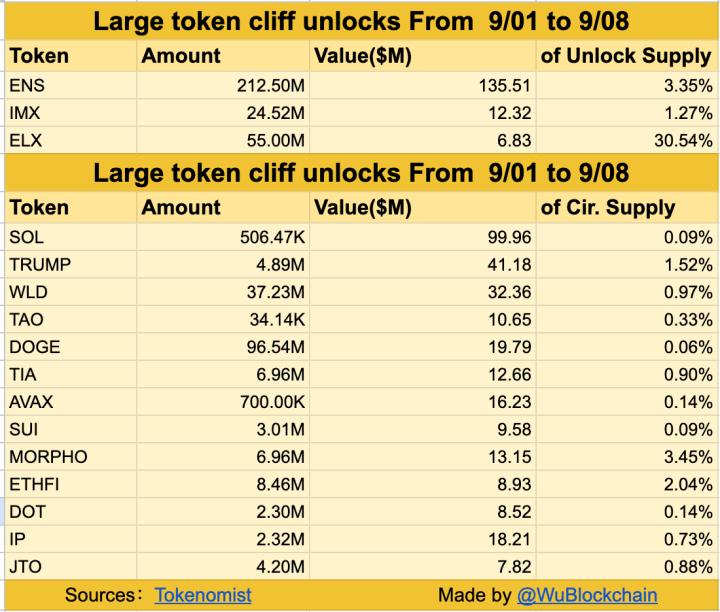
Introduction: The Key Step to Safeguarding Wealth
Imagine holding millions of dollars' worth of Bitcoin, only to have it all vanish in the blink of an eye due to a hacker attack or negligence. This is not a fictional story, but a reality that the cryptocurrency world may face in 2025. Today, the price of Bitcoin has reached $200,000, and the global cryptocurrency market has surpassed $2.5 trillion in size, attracting the attention of institutions and high-net-worth individuals. However, as wealth grows, so do the security risks. Cryptocurrency custody, the critical step in protecting assets, has become an unavoidable choice.
Are you a newbie institution just getting into cryptocurrencies, or a high-net-worth user with a large amount of assets but concerns about security? This article will unveil the secrets of custody, outline the industry trends for 2025, and provide practical advice to protect your wealth. Let's take the first step together in safeguarding your wealth.
Part 1: Custody, the Foundation of Wealth Security
What is Custody? The Choice of Who Controls the Keys
Simply put, custody is about deciding who will manage your digital assets. More specifically, it's about the ownership of your "private key." The private key is the key to accessing your cryptocurrency wallet, and losing it means losing everything. You can choose to entrust it to a professional institution, which is called third-party custody. You can also keep it yourself, which is self-custody. It's like deciding whether to keep your money in a bank or at home - custody is a choice between security and convenience.
Why is Custody So Important?
In 2025, the cryptocurrency market will be thriving. Institutional funds will pour in, and the assets of high-net-worth individuals may reach tens or even hundreds of millions of dollars. However, the risks of hacker attacks and private key loss will also increase. Custody not only protects your assets from threats, but also allows you to participate in the market with greater peace of mind. For newbie institutions, custody is the starting point for entering the cryptocurrency world. For high-net-worth users, it is the cornerstone of wealth security.
Common Misconceptions
Some believe that custody means completely handing over your assets to someone else, with no control. In fact, many services allow you to withdraw your funds at any time. Others think that managing the private key yourself is the safest option. But if you don't know how to properly store it, the risk may be even greater. Custody is not black and white, but about finding the right solution for you.
Part 2: The New Landscape of Custody in 2025
Industry Transformation, Gaining Momentum
In 2025, cryptocurrency custody will no longer be a niche field, but an important part of the financial industry. Traditional giants like BlackRock and Fidelity have launched enterprise-level custody services, driving the market towards maturity. The "crypto-friendly" policies of the U.S. government have allowed banks to provide compliant custody services. Advancements in multi-signature technology and decentralized finance (DeFi) have also made custody more flexible and efficient.
Data Reveals the Trends
Market research predicts that the cryptocurrency custody industry will grow from $4.64 billion in 2025 to $15.75 billion in 2034, with an annual growth rate of 14.53%. The continued popularity of Bitcoin ETFs is expected to drive record inflows in 2025, leading to a surge in custody demand. Institutions and high-net-worth individuals are accelerating their deployment in this field.
New Opportunities, New Frontiers
The tokenization of real-world assets (RWA) became a highlight in 2025. Real estate, art, and private equity funds have been transformed into digital tokens, rapidly expanding the application of custody services. The daily trading volume of stablecoins is expected to reach $300 billion, with custody services becoming a core supporting element. This provides a safer market environment and more investment opportunities for newbie institutions and high-net-worth users.
Part 3: Self-Custody or Third-Party? Your Choice
Self-Custody: Steering Your Own Ship
Want to have complete control over your assets? Self-custody allows you to manage your private keys yourself. Hardware wallets, such as Ledger or Trezor, can store your assets on an offline device. Software wallets, such as MetaMask, are convenient for frequent use. The advantages are obvious - strong privacy and control in your hands. But the risks are also high, as if you lose or expose your private key, no one can help you recover it. This option is suitable for technically proficient institutions or high-net-worth users who prioritize privacy.
Third-Party Custody: Professional Guardianship
Not tech-savvy or short on time? Third-party custody is a good option. Service providers like Cactus Custody offer bank-level security protection with insurance support. The operation is simple, and the risk of asset loss is low, making it very suitable for newbie institutions and high-net-worth users. However, you need to trust the service provider, and if the platform encounters problems, your assets may be affected. This option is suitable for users who need convenience and professional support.
Recommendations for 2025
How to decide? Look at three points. First, security. Strengthened regulation makes third-party custody more reliable. Second, cost. Hardware wallets are a one-time investment, while third-party may charge annual fees. Third, needs. Short-term trading is better suited for third-party, while long-term holding tends to favor self-custody. Newbie institutions can start with third-party, while high-net-worth users can combine the two to ensure asset security.
Part 4: Practical Methods to Protect Wealth in 2025
Basic Protection, a Must-Have
Protecting wealth starts with the basics. Private keys must never be compromised, and backups should be stored on secure offline media, such as encrypted USB drives or paper records, in a secure and fireproof location. Accounts and wallets should enable two-factor authentication to add an extra layer of protection. In 2025, phishing websites and fake emails may be more rampant, so be cautious when encountering suspicious links.
Advanced Protection, Enhancing Security
Want to go further? Multi-signature wallets require multiple private keys to approve fund transfers, making it difficult for hackers to succeed. Cold storage isolates assets in an offline environment, protecting them from network attacks. These methods are particularly suitable for high-net-worth users, providing more robust protection for large-scale assets.
Addressing New Risks
In 2025, AI-driven scams may increase, with fake emails and phishing sites becoming harder to detect. Staying vigilant is key. The regulatory environment is also changing, so choosing custody services that comply with local laws can mitigate policy risks. Security always comes first, and returns are built on a foundation of security.
Your Action Checklist
1. Check the service provider's qualifications to ensure they have insurance and regulatory support.
2. Check and update account passwords every three months, and ensure the safety of your backups, such as private keys or recovery phrases.
3. Start with a small amount of funds to test the process, then gradually increase your investment once you're familiar with it.
Part 5: Mainstream Technologies and Trends in Custody in 2025
Technological Support, Strengthening Security
The strength of cryptocurrency custody comes from technological support. Decentralized finance provides "trustless" options, allowing you to manage your assets more autonomously. The combination of artificial intelligence and blockchain can detect threats in real-time and respond quickly. These technologies have become the core advantages of custody. In 2025, TSS, multi-signature, zero-knowledge proofs, and HSM are the mainstream solutions, providing solid support for the industry.
TSS (Threshold Signature Scheme): Smart Key Management
TSS, short for Threshold Signature Scheme, is a technology that divides the private key into parts. For example, it can be divided into 3 parts, with at least 2 parts required to unlock. The benefit? Even if you lose one part, the assets remain secure, and hackers cannot break through. High-net-worth users use it to protect large sums of money, and newbie institutions can achieve multi-person management through Cactus Custody's TSS support, making it both secure and practical. This technology is still a recommended choice in 2025.
Multi-Signature (Multisig): Multi-Layered Protection
Multi-signature, or Multisig, requires multiple parties to agree before funds can be used. For example, in a "3-of-5" model, 3 out of 5 keys must consent for a transaction to be valid. This is like adding several locks to your assets, significantly enhancing security. Institutions use it to ensure team collaboration, and high-net-worth users use it to prevent mistakes. In 2025, multi-signature will remain an important safeguard in custody.
Zero-Knowledge Proof (ZKP): A Barrier for Privacy
Zero-Knowledge Proof, or ZKP, allows you to prove your authorization without revealing your private key or balance. Currently, some custodial services have begun to explore it, ensuring identity authentication while protecting asset privacy. By 2025, ZKP will provide a simple and secure experience for retail institutions and stronger privacy protection for high-net-worth users, making it a direction worth watching.
HSM (Hardware Security Module): A Solid Security Foundation
HSM, or Hardware Security Module, is a specialized device that protects keys from attacks. Banks commonly use it to ensure security, and Cactus Custody also uses it to safeguard client assets. Even if the platform encounters problems, the keys remain secure. In 2025, HSM will still be a key pillar of custodial security, providing reliable support for users.
Global Trends, Continuous Expansion
The United States has included Bitcoin in its strategic reserves, fundamentally changing the custodial landscape. Countries like Argentina have quickly followed suit, and the demand for crypto custody has expanded from Wall Street to the global stage. Retail institutions have thus gained more opportunities to participate, and high-net-worth users can seize the trend of globalization. The combination of TSS, multi-signature, zero-knowledge proof, and HSM supports a broader custodial network.
Are You Ready?
The strength of custody lies in technology and choice. TSS brings flexibility, multi-signature enhances protection, zero-knowledge proof ensures privacy, and HSM provides a solid foundation. These mainstream technologies make custody safer and more user-friendly. Whether you are a new institution or an experienced player, 2025 is an important moment to leverage these technologies to protect your wealth.
Part Six: Cactus Custody, the Custody Expert in Asia
Powerful Protection, Guarding Massive Assets
Cactus Custody is the leading digital asset custodian in Asia, founded by Mr. Wu Jihan, and focuses on providing secure and compliant solutions for institutions. It has obtained ISO certification, holds a Hong Kong Trust Company license (TC006789), and enjoys regulatory exemption from the Monetary Authority of Singapore, with impeccable compliance. Currently, it protects assets worth billions of dollars, serving more than 300 institutional clients globally, covering mining pools, exchanges, funds, asset management platforms, DeFi, and lending.
Technological Support, Secure and Reliable
How does Cactus Custody ensure security? It uses bank-grade cold storage to isolate assets, HSM encryption devices to protect keys, and TSS technology to distribute private key risks, building a robust cold-hot separation system. It can handle both external attacks and internal mistakes with ease. Its zero-security incident record since its inception proves its strength. Retail institutions use it with peace of mind, and high-net-worth users use it with confidence.
Flexible Services, Improving Efficiency
Cactus Custody is not only secure but also practical. It provides flexible custodial solutions to help enterprises reduce development and management costs, and improve risk control and operational efficiency. From mining pools to DeFi, from funds to lending, it customizes services for clients. Since its inception, it has adhered to the principles of security first and integrity, supporting leading global enterprises in managing digital assets.
Epilogue: Unlock Your Wealth Protection
Cryptocurrency custody is the solid foundation for your wealth. In 2025, the market is full of opportunities, with a variety of choices. Retail institutions can start with third-party custody and adapt quickly. High-net-worth users can firmly guard their large assets through diversified allocation and technical support.
Take action now. Check your crypto assets and build your defenses. Unlock the knowledge of custody and embrace the wealth growth in 2025. Want to learn more? Research hardware wallet usage methods or contact custody experts like Cactus Custody - there is always a solution that suits you.
Interested in Cactus Custody's customized crypto custody solutions? Feel free to send an email to sales@mycactus.com, and our team will respond quickly to provide professional assistance.
Welcome to join the official community:
Telegram Subscription Group: https://t.me/theblockbeats
Telegram Discussion Group: https://t.me/BlockBeats_App
Twitter Official Account: https://twitter.com/BlockBeatsAsia








